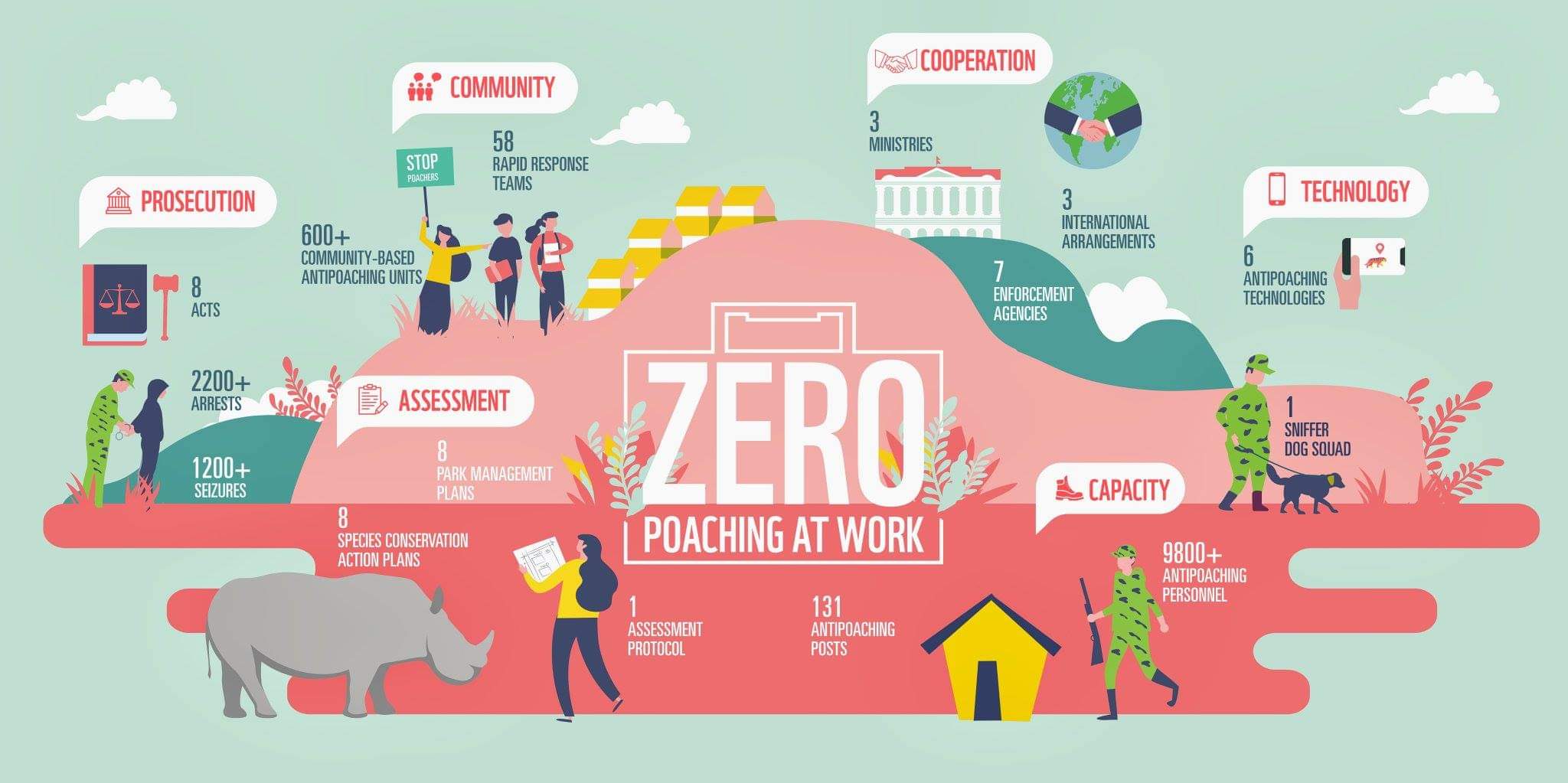Offer a better, alternative livelihood and Poachers may find a reason to shun wildlife trafficking altogether. It’s true. Various stories from India and the World reiterates the story.
According to WWF-India, we have lost an average of 68% of mammals, fish, amphibians, birds and reptiles since 1970. Any loss to precious Biodiversity can increase our risk to zoonotic diseases and leave us further vulnerable to vagaries of Nature.
Further more than 420 million wild animals have been traded in 226 nations over the last two decades, according to newly found figures in a research.
However, the most interesting fact that it presents us with, is that Income inequality among Nations is the prominent reason for operation of Wildlife trafficking.
On the lines of revelation made above, there have been instances where rehabilitation and provision of alternate means of survival have helped the Poachers quit this unethical trade.
Stories from India where Poachers could relinquish their past and could associate more with Nature:
1. Eco India in India’s Tamil Nadu offers sustainable living means to operators of Wildlife trafficking. They began with preserving the slender loris in the region that led to acknowledgement of Poacher’s necessity to kill and loot these wildlife animals.
Their poaching was due to a belief in their mystic medicinal powers and meat being treated as an aphrodisiac. However the local community, NGO and Dindigul Forest Department worked for the betterment of poachers in the community.
Due to sustained efforts, Poachers from even 10-15 years in business have taken up organic farming as a livelihood option.
2. Pardhi youths in Madhya Pradesh: A group of misguided tribal youth who used to poach wild animals for meat and trade in MP’s Panna Tiger Reserve, a crucial area for Tigers and many others.
They have been contributing to ecotourism activities in the reserve for past couple of years, as they know the wilderness better. State forest department in collaboration with the Last Wilderness Foundation, has strived to provide them better and alternate means of survival.
The Panna initiative has become one of several trend-setting rehabilitation projects involving poachers been undertaken in various parts of the country driving change over the years.
So, poachers are now turning into protectors, and village communities are now managing every aspect of Nature Conservation.
3. Sunderbans West Bengal: Shakti Ranjan Banerjee, associated with WWF-India from 1998 to 2007, has witnessed and attempted the transformation of poachers into eco-warriors over the past few decades.
He has worked closely with Anil Mistry, a poacher turned conservationist, born and raised on Bali, one of the nine islands in the Sundarbans. He gave up poaching in 1990 after watching life being sucked out of a Doe. He has been exemplary in inspiring other Villagers.
Sunderbans host Mangrove forests, a home to Royal Bengal Tiger and spans from the Hooghly River in West Bengal to Baleswar River in Bangladesh.
The Villagers have been awakened to understand that if the wildlife remains, their money will keep flowing in from Ecotourism.
4. Kerala’s Periyar: “Loss of livelihood and criminal stigma attached to our clan by the officials over the years are forcing us to engage in such illegal activities.
We are ready to lay down the arms if you are ready to give us decent jobs which can ensure a stable monthly income,” said a Poacher when he was nabbed along with his group.
This led to formulation of Vidiyal Vanapathukappu Sangam, India’s first eco-development committee composed solely of former poachers and sandalwood smugglers.
Vidiyal team were accused of 3-12 cases of poaching and timber smuggling against them when they surrendered. “We are doing respectable jobs now and we are not getting treated as criminals”, they exclaim.
According to Mongabay-India, this team’s remarkable achievement was in making Marayoor sandalwood reserve a completely smuggler-free zone.
In daytime they work as tourist guides and elephant safari providers while at night-time they engage in patrolling and special anti-poacher activities.
5. This is being replicated well in Manas National Park of Assam, that faced severe danger to wild animals, mainly rhinos due to regional Autonomy issues. Now the reformed poachers have constituted Committees and the sanctuary seems well protected.
During Bodoland Insurgency, no work was found. The police could threaten any youth for being an insurgent. Socio-political insecurity provided a reason to poach and earn a living.
Manas Maozigendri Ecotourism Society (MMES), a community conservation organization is active in the area with its 50 staff members, providing surveillance and additional security in need.
Discovery Club has urged WTI (Wildlife Trust of India) to create an anti-poaching force in Chakrasilla Wildlife Sanctuary of Kokrajhar district of the north-east Indian Assam state.
These stories say a lot in respective ways. Wildlife trafficking has been a mess and pain for our Governments and Institutions.
When the problem sustains even after ultimate protection in the areas, we need to foster new ways of dealing with it. In these cases, rehabilitation worked well for the cause.
Inequality virus is known to feed on anything it finds.
It seems and is being floated in studies now, that any upliftment of local community in monetary terms can help eliminate danger to our wildlife. Afterall, poachers are people too. They need to feed their families. Willful rehabilitation shall be encouraged anyday for greater good.
Pandemic has snatched everyone’s means of survival and unsurprisingly, illegal Wildlife trade flourished in these perishing times. It is high-time India addresses this concern and derives proper solutions for it.



